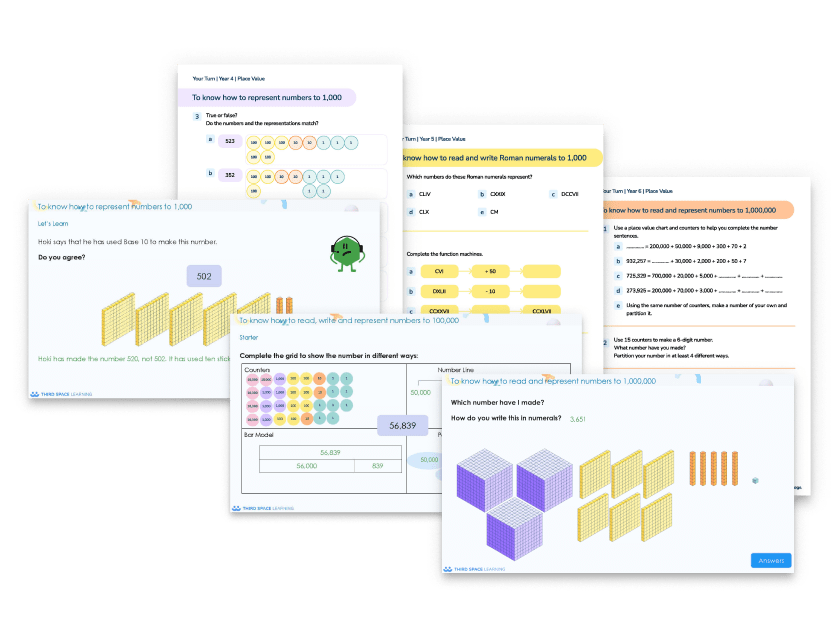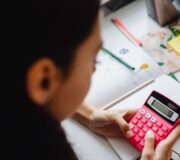White Rose Maths Year 5: What Students Learn And The Resources To Support Them
Here we look at the White Rose Maths Year 5 scheme of learning, the topics it covers across the year and provide lots of sample questions and White Rose Maths resources for those following White Rose in Year 5.
About White Rose Maths
The White Rose Education Maths scheme of learning follows the national curriculum with a mastery approach to maths with a range of fluency, reasoning and problem solving elements. They also encourage concrete, pictorial and abstract representations to develop deep understanding of mathematical concepts.
Read more: White Rose Maths
It is thought that approximately 70% of schools in the UK follow the White Rose Maths scheme. Because of this, our team of maths teachers and pedagogy experts use White Rose maths to inform the development of our tutoring programmes and to train Skye, the AI maths tutor. This enables our tutoring to deliver one to one, personalised lessons that feel familiar to students who are used to White Rose and that can have close transferability from tutoring to the classroom.
Throughout this article you’ll see example lesson slides and example questions from Third Space Learning’s Year 5 maths curriculum that exemplify best practice teaching to the White Rose Maths Year 5 scheme.
Year 5 White Rose Place Value Lesson
Download these free Year 5 White Rose resources to teach your class place value. You will need to register or login to the Maths Hub but it’s totally free!
Download Free Now!About the Year 5 White Rose maths resources provided
In this article we’ve included lots of links to Year 5 White Rose Maths resources that are suitable for use for each topic. All of these links will take you to the Third Space Learning Maths Hub. Many of the resources are free to download once you’ve registered (also free); others are accessible with a premium subscription.
You’ll also be able to review our entire range of maths resources for Year 5 while you’re there, most of which are aligned to White Rose Maths. Keep reading to find out more about these resources and the Year 5 White Rose Maths scheme.

Meet Skye, the voice-based AI tutor making maths success possible for every student.
Built by teachers and maths experts, Skye uses the same pedagogy, curriculum and lesson structure as our traditional tutoring.
But, with more flexibility and a lower cost, schools can scale online maths tutoring to support every student who needs it.
Watch Skye in actionAbout the White Rose Maths Year 5 Scheme of Learning
The primary school White Rose Maths scheme of learning has gone through several iterations and versions up to the current version 3. The scheme of learning SOL is designed as guidance and it is not necessarily intended for each small step to take one lesson. As with all teaching, it is important that teachers adapt this SOL for their class/ pupils.
Topics covered in Year 5 White Rose Maths scheme of learning work
The White Rose Maths Year 5 SOL outlines which topics are taught, and when, throughout the autumn, spring and summer terms of Year 5.
The breakdown for Version 3 of the scheme of learning is as follows
Year 5 autumn term
- Place value
- Addition and subtraction
- Multiplication and division A
- Fractions A
Year 5 spring term
- Multiplication and division B
- Fractions B
- Decimals and percentages
- Perimeter and area
- Statistics
Year 5 summer term
- Shape
- Position and direction
- Decimals
- Negative numbers
- Converting units
- Volume
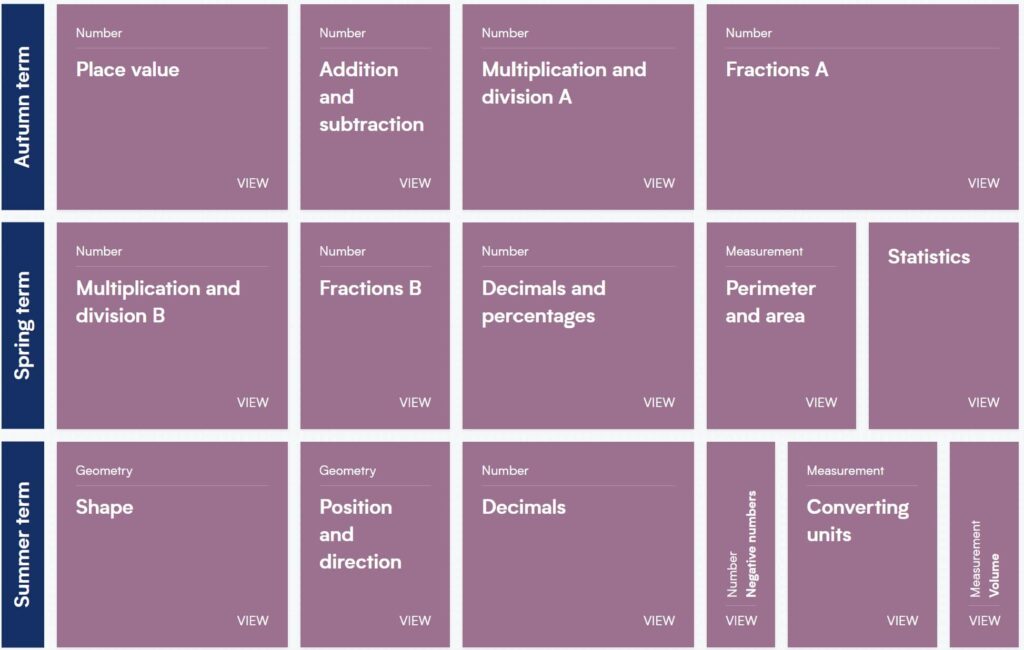
Recommended White Rose Maths Year 5 resources
Third Space Learning has created several collections of White Rose Maths aligned resources for all primary year groups from Year 1 through to Year 6. These resources can provide a different perspective on a topic and so help pupils spend the time needed to fully embed a concept.
Here is a summary of the different collections available for schools following Year 5 White Rose Maths, many of them are free to download from our maths hub and some are premium resources. Links to the topic specific versions are provided within each termly breakdown below:
Ready to go lesson slides
These ready-to-go lesson slides come in the form of editable PowerPoints with related worksheets that are designed for everyday teaching. The slides cover both version 2 of the White Rose scheme of learning (in blue) and version 3 of the SOL. They also include support slides that can be used to support pupils who need a little extra pre/ post teaching to support their understanding.
Code Crackers
Our Code Crackers resources are aligned to the version 3 SOL. These are summative resources designed as a retrieval activity for the end of the place value block.
Pre and Post Diagnostic Assessments
These assessments can be used before starting a block of learning to assess gaps, and after teaching a block of learning to identify progress.
Worked Examples
Pupils check over completed questions to identify errors (or identify correct answers). Children are encouraged to explain the errors they find, not just ‘mark’ work. These worked examples help to solidify understanding by getting the pupil to discuss errors and how to avoid them.
Rapid Reasoning
These reasoning problems go alongside our Fluent in Five resource. Each day focuses on a specific small step with 3 questions that progress in difficulty.
Word Problems
Test your class’ problem solving skills with these word problems worksheets.
Extension Questions
These topic based questions can be used to help pupils deepen their understanding by challenging them to think differently about a given topic.
White Rose Maths Year 5 autumn term
In the autumn term, Year 5 focuses on place value, addition & subtraction, multiplication & division and fractions.
Place Value Year 5
By the time pupils reach Year 5, place value continues to be the first concept covered, but with a shorter length of time spent on it than in previous years. In autumn block 1 children work with increasingly larger numbers; reading, writing, comparing and ordering numbers to 1,000,000 and continue to develop their understanding of Roman numerals. Pupils build on their understanding of rounding; round to the nearest 10, 100 and 1000.
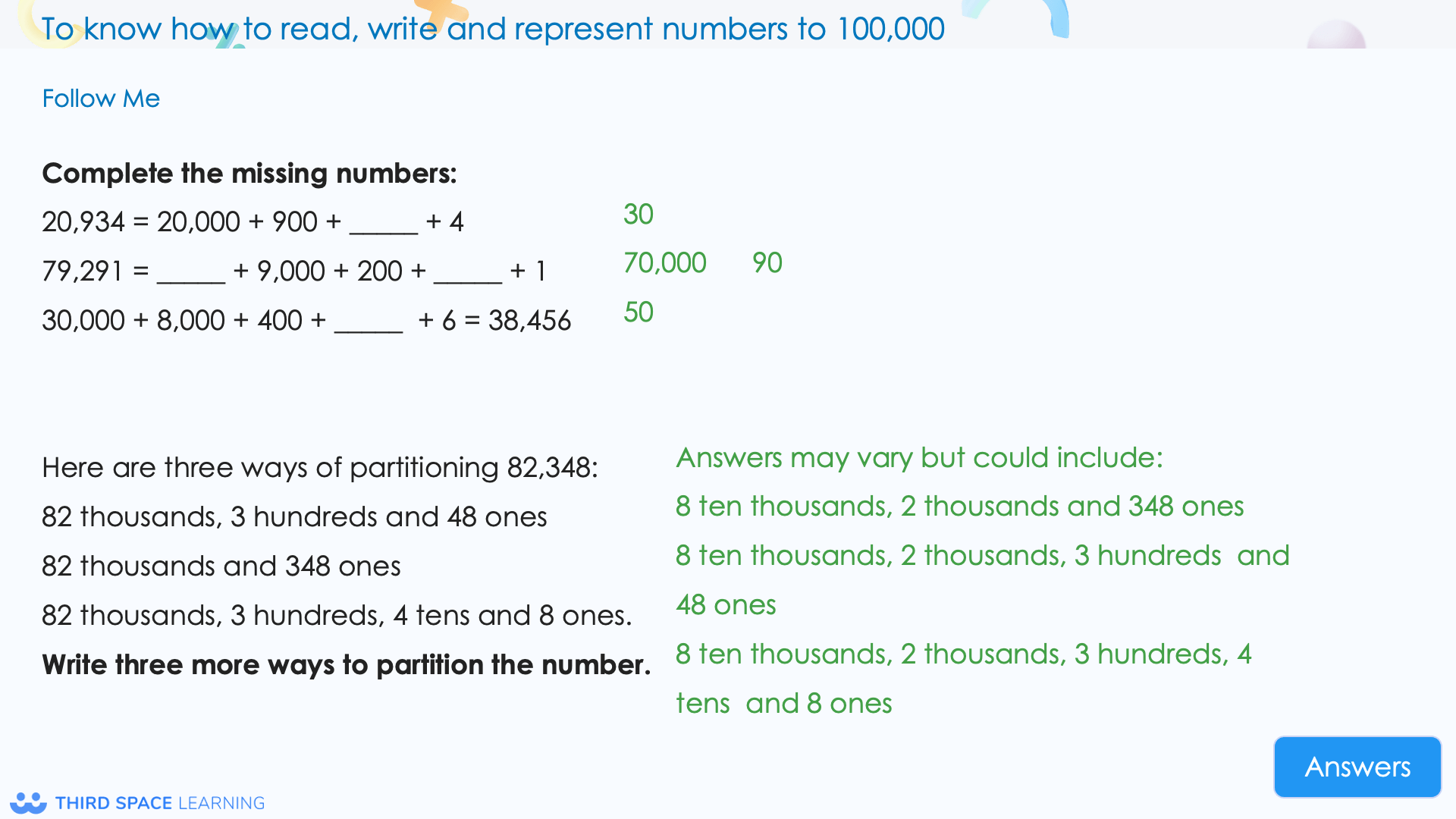
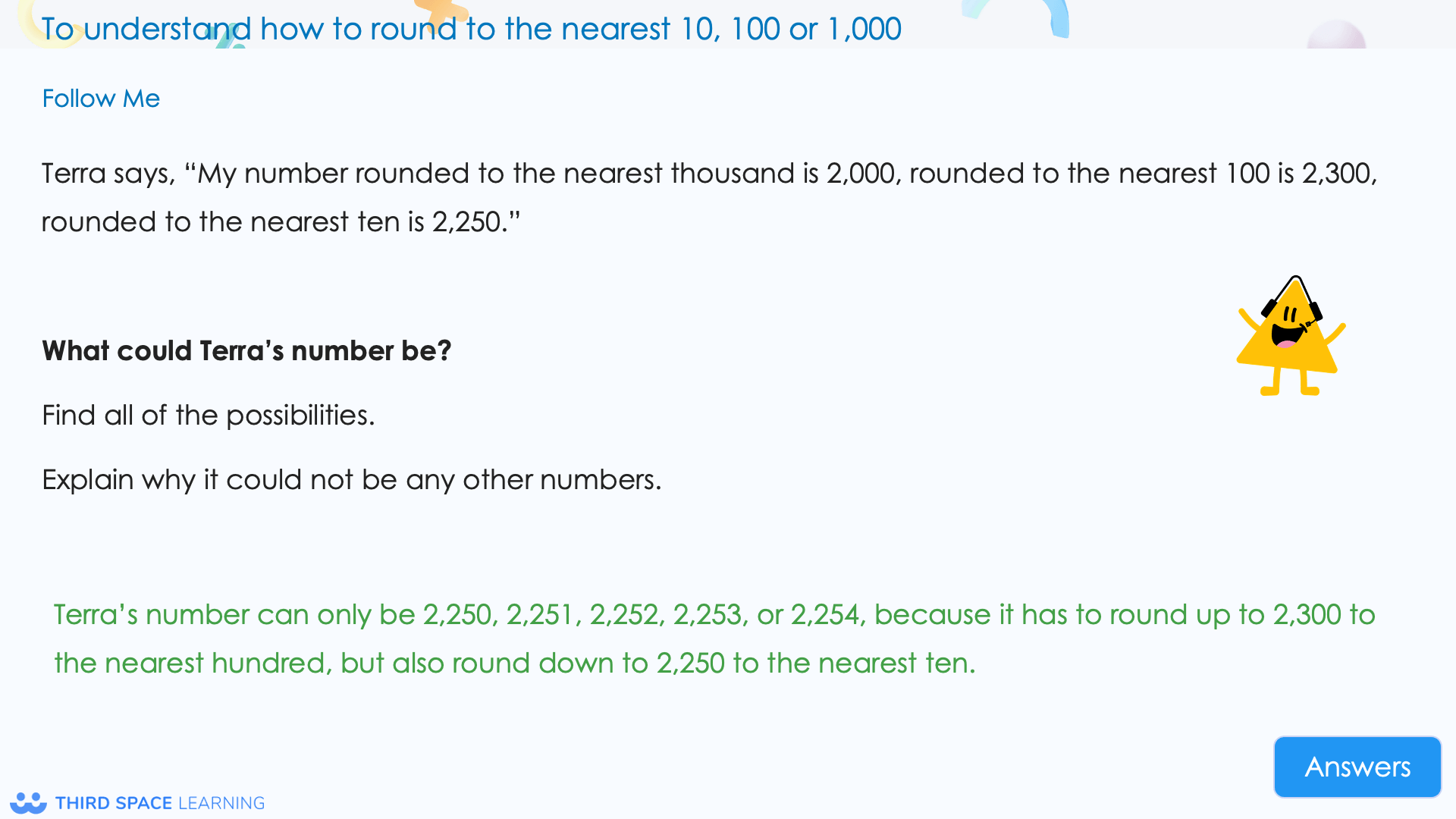
of accuracy to a worded problem.
Example Year 5 place value questions
1. What is the value of the underlined digit in each number below?
a)534,641 b) 718,076 c) 921,759
Answers:
- 6 hundreds or 600
- 7 tens or 70
- 20 thousands or 20,000
2. Round 52,532 to the nearest 10, 100 and 1000.
Answer:
52,532 to the nearest 10 = 52,530
52,532 to the nearest 100 = 52,500
52,532 to the nearest 1,000 = 53,000
White Rose Maths Year 5 place value resources (FREE)
- Ready-to-go Lessons Place Value Year 5
- Maths Code Crackers Place Value Year 5
- Diagnostic Assessments Place Value Year 5
- Worked Examples Place Value Year 5
- Rapid Reasoning Weeks 1 to 6 Year 5
- Word Problems Place Value Year 5
- Extension Questions Place Value Year 5
- Knowledge Organiser Place Value Year 5
Addition and Subtraction Year 5
In Year 5 autumn block 2, pupils continue to practise using formal written methods of columnar addition and subtraction with increasingly large numbers over 4-digits. Students also develop their checking skills, through rounding and using inverse operations. By this stage pupils are also working on increasingly complex, multi-step word problems.
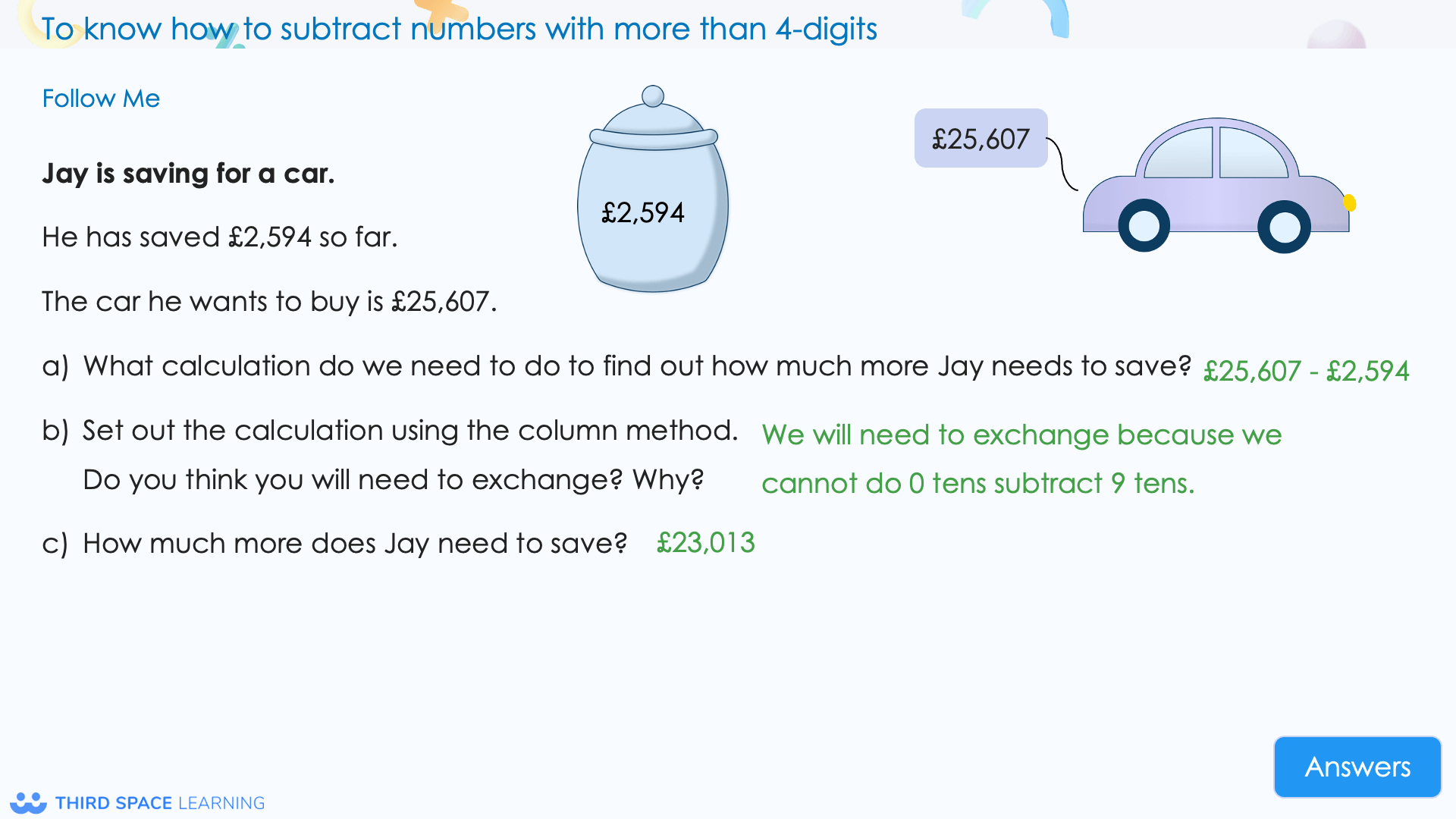
This problem addresses exchanging, which some pupils can find confusing,
especially when 0 is involved in the minuend.
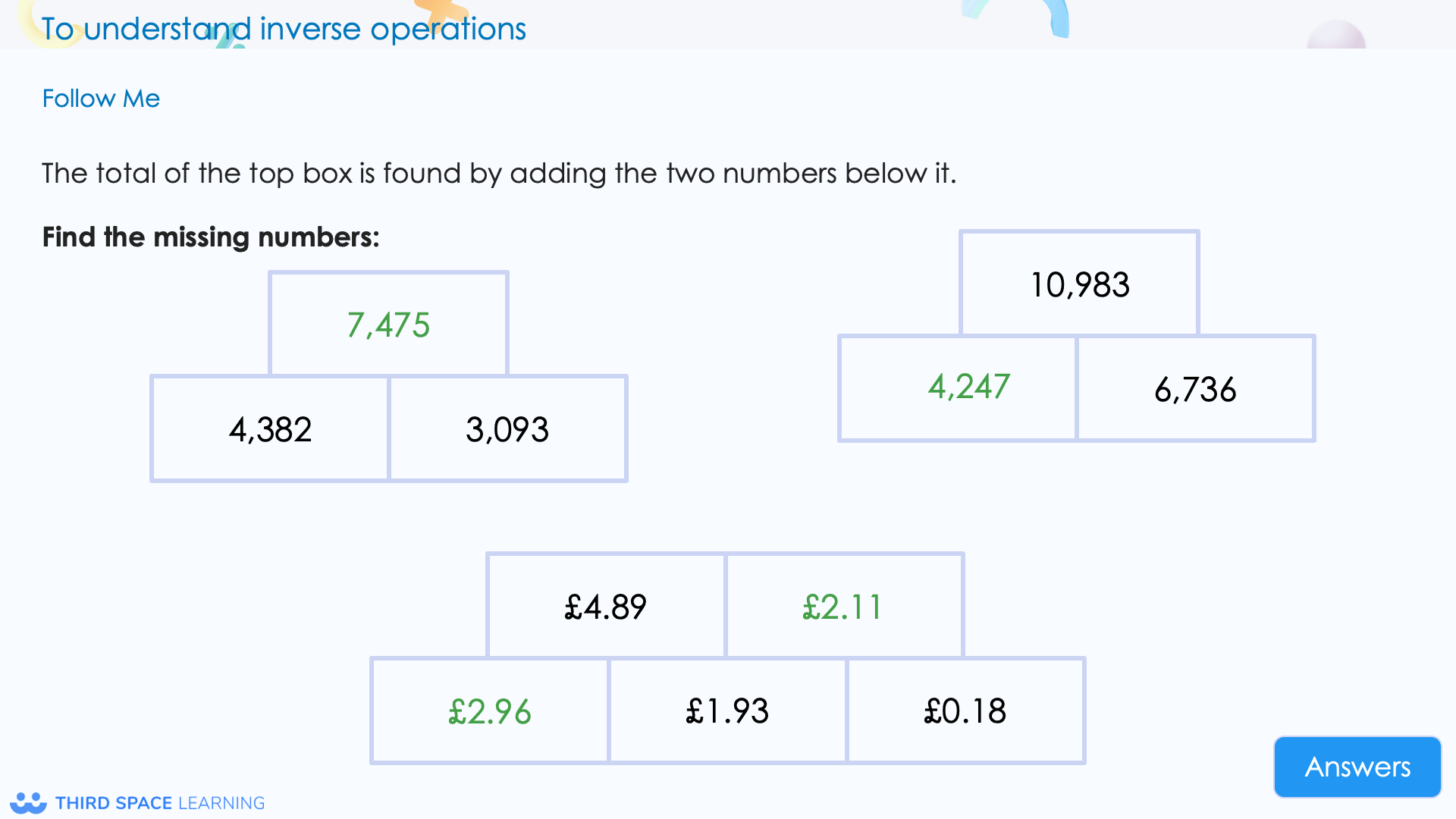
addition and subtraction while also applying their understanding to
their previous learning (expressing money using decimals).
Example Year 5 addition and subtraction questions:
1. 52,378 + 87,659 =
Answer: 140,037
2. 86,143 – 48,967 =
Answer: 37,176
White Rose Maths Year 5 addition and subtraction resources (FREE)
White Rose Maths Year 5 addition and subtraction resources (PREMIUM)
- Ready-to-go Lessons Addition and Subtraction Year 5
- Diagnostic Assessments Addition and Subtraction Year 5
- Worked Examples Addition and Subtraction Year 5
- Word Problems Addition and Subtraction Year 5
- Extension Questions Addition and Subtraction Year 5
- Knowledge Organiser Addition and Subtraction Year 5
Multiplication and Division Year 5
Multiplication and division is split into two blocks. It is covered initially in the autumn block 3, in Block A and continues with Block B in spring block 1.
Multiplication and Division A Year 5
The first multiplication and division block covers multiples, common multiples, factors, prime numbers, square numbers and cube numbers. Pupils also develop their understanding of multiplying by 10, 100 and 1000.
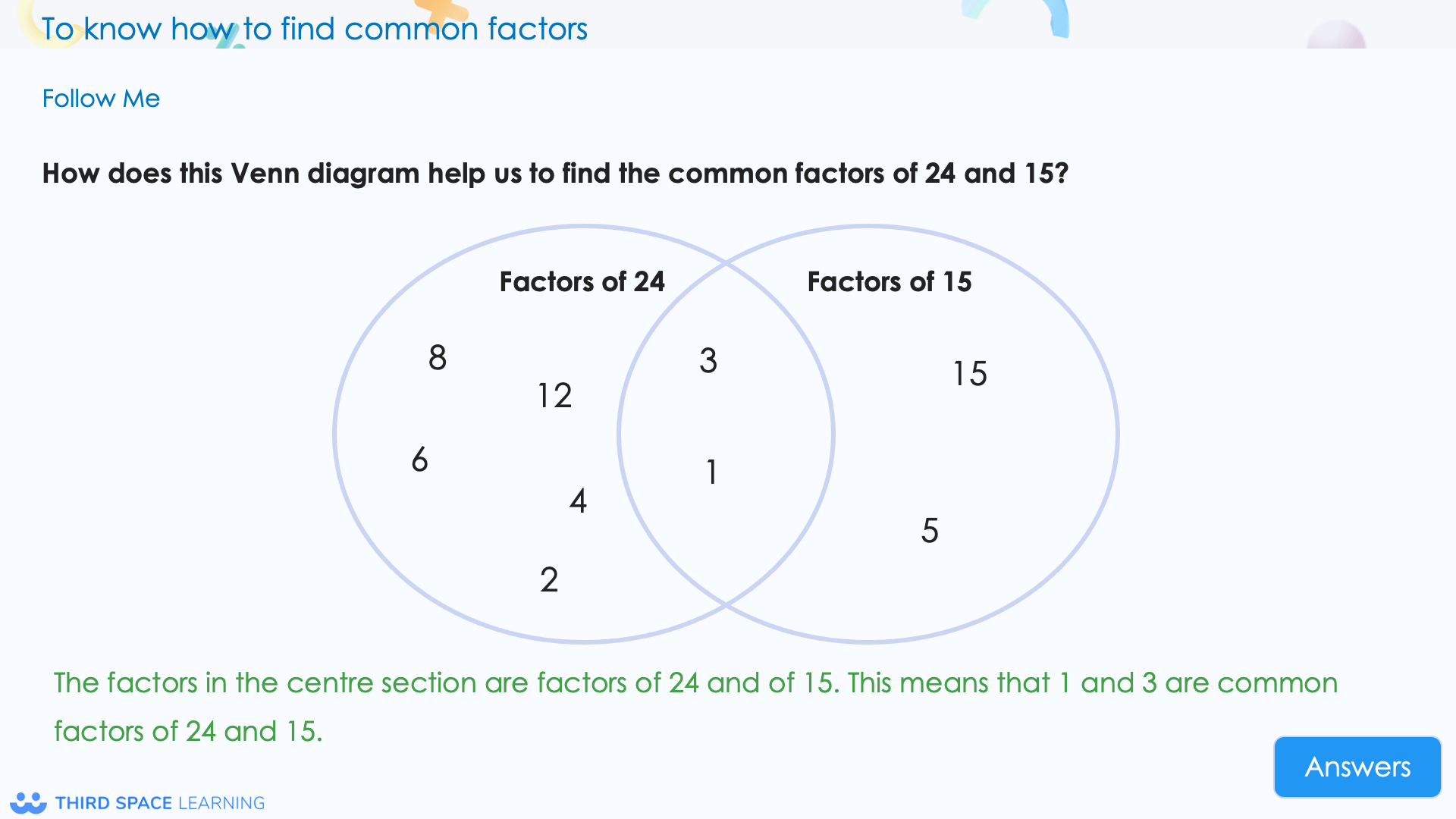
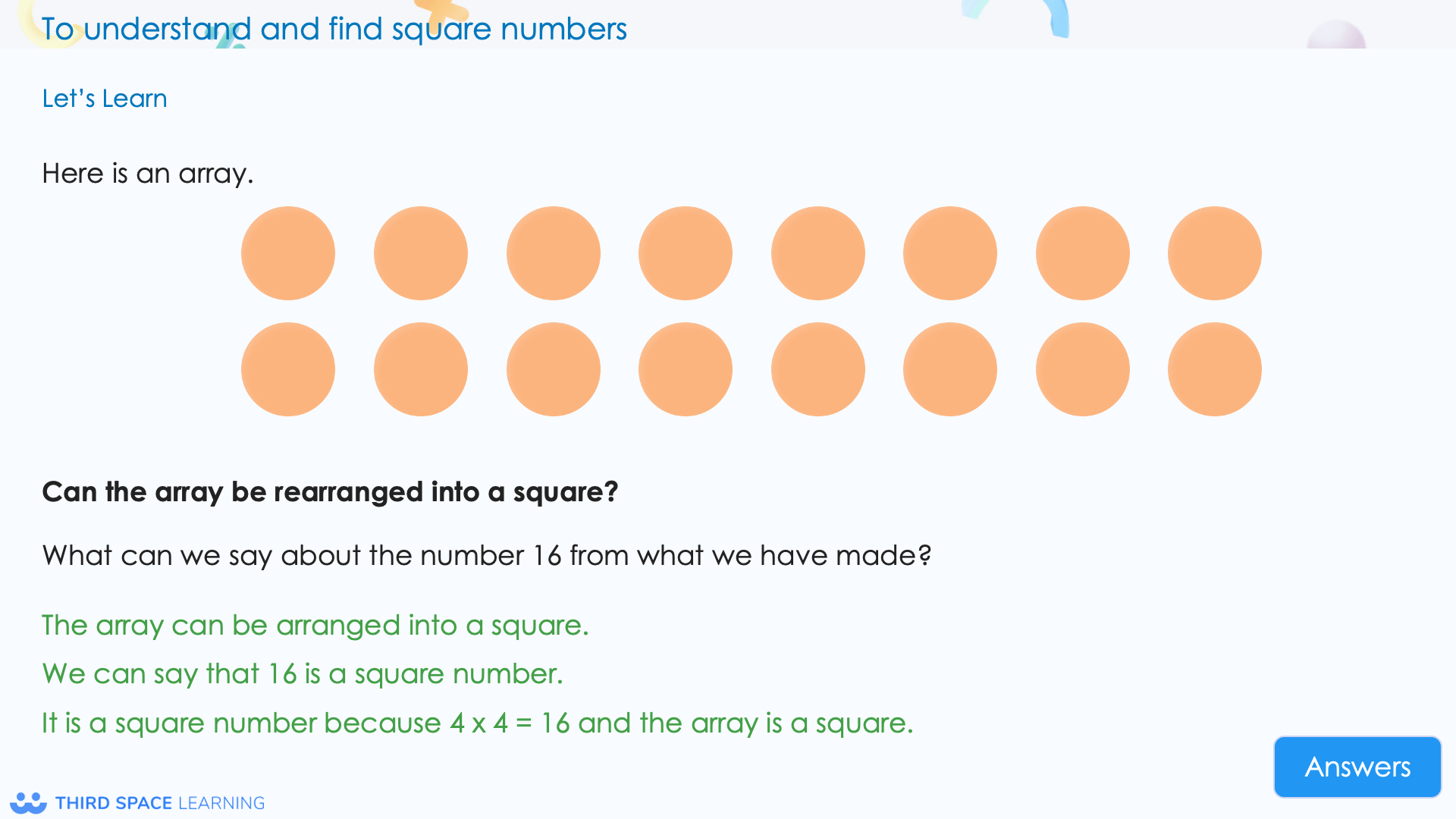
They can use their understanding of arrays to explore square numbers.
Example Year 5 multiplication and division A questions
1. Find the common factors for 12 and 36
Answer: 1, 2, 3, 4 and 6
2. Multiply 23 by 10, 100 and 100
Answer:
23 x 10 = 230
23 x 100 = 2300
23 x 1000 = 23,000
White Rose Maths Year 5 multiplication and division resources (PREMIUM)
- Ready-to-go Lessons Multiplication and Division A Year 5
- Ready-to-go Lessons Multiplication and Division B Year 5
- Diagnostic Assessments Multiplication and Division Year 5
- Maths Code Crackers Multiplication and Division A Year 5
- Maths Code Crackers Multiplication and Division B Year 5
- Worked Examples Multiplication and Division A Year 5
- Worked Examples Multiplication and Division B Year 5
- Word Problems Multiplication Year 5
- Word Problems Division Year 5
- Extension Questions Multiplication and Division Year 5
- Knowledge Organiser Multiplication and Division Year 5
Fractions Year 5
Fractions are also split into two blocks, with Block A covered at the end of the autumn term and Block B in the spring term.
Fractions A Year 5
Fractions A is the first of the two fraction blocks taught in Year 5. Pupils continue to develop their understanding of equivalent fractions and learn how to convert between improper fractions and mixed numbers. In block A, children build on the skills developed in Year 4; progressing from adding and subtracting fractions to adding adding and subtracting mixed numbers.
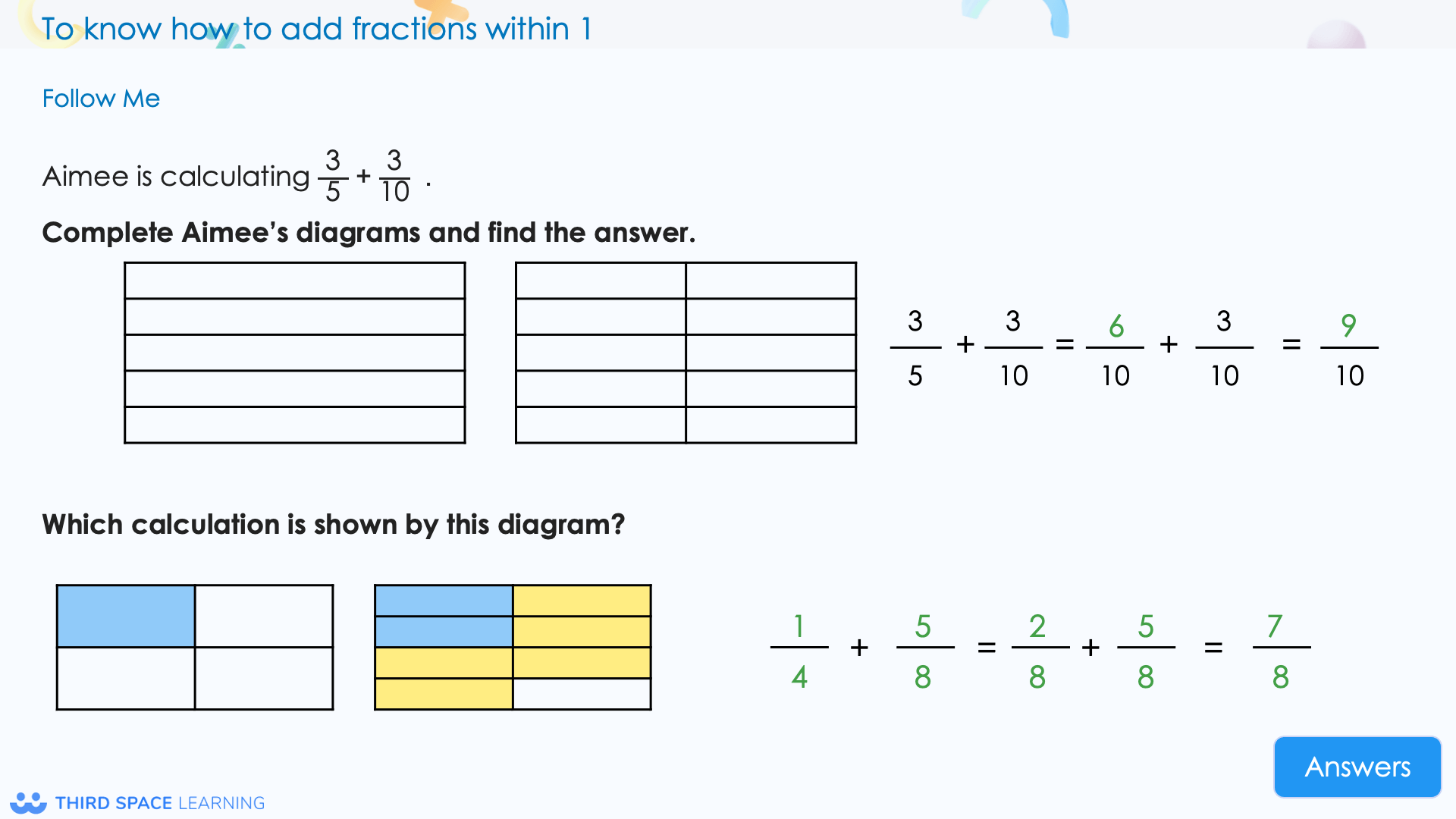
to adding and subtracting fractions with different denominators.
This extends to fractions greater than 1.
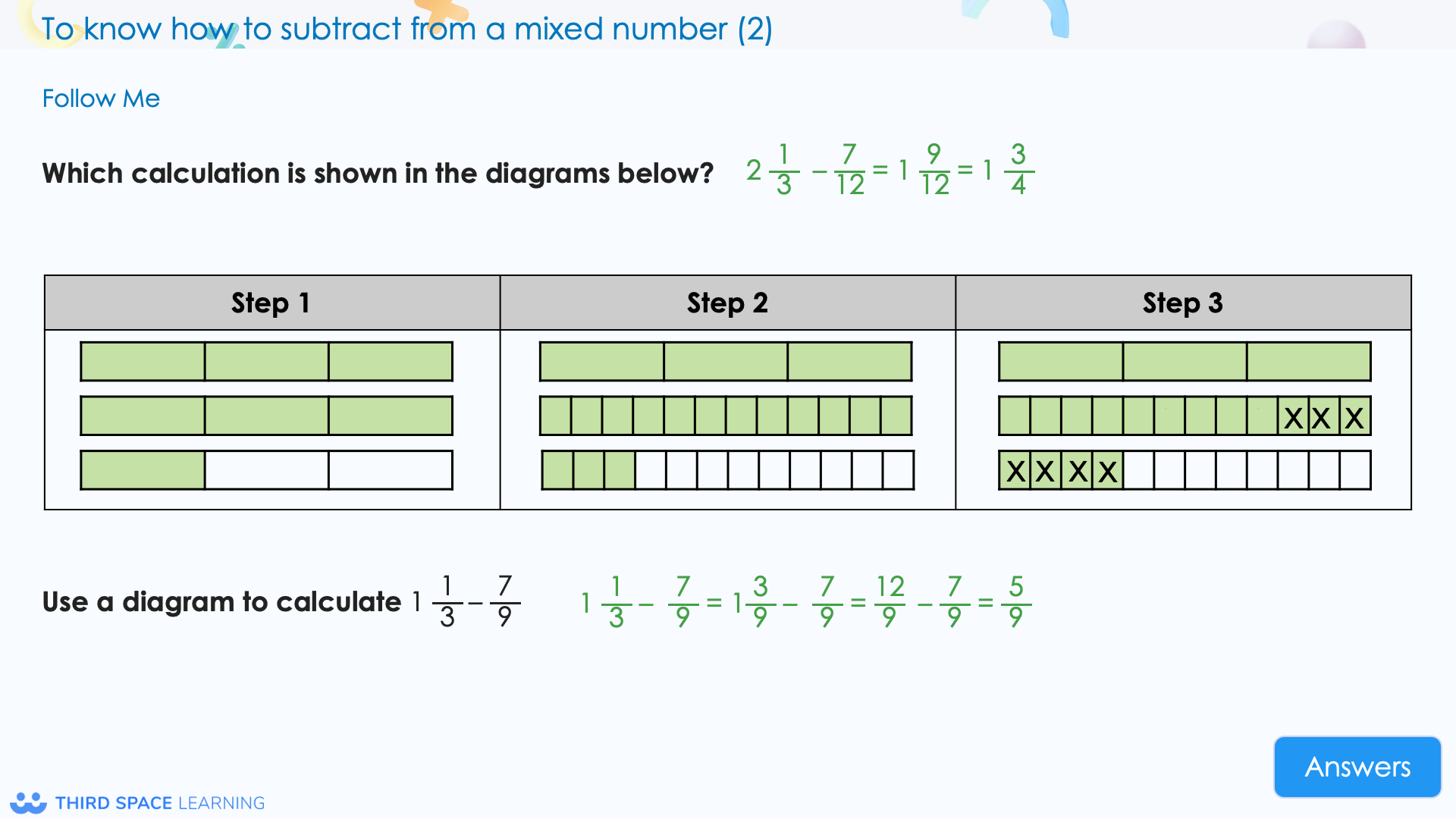
how to subtract a fraction from a mixed number.
Example Year 5 Fractions A questions
1. Give 3 fractions which are equivalent to \frac{2}{3}
Answer: Any fraction where the numerator and denominator have been multiplied by the same amount
E.g. \frac{4}{6}, \frac{6}{9}, \frac{8}{12}, \frac{10}{15}
2. 5\frac{1}{4} + 6\frac{2}{8} =
Answer: 11\frac{4}{8} or 11\frac{1}{2} =
White Rose Maths Year 5 fractions resources (FREE)
- Maths Worksheet Equivalent Fractions Using Number Lines Year 5
- Maths Worksheet Finding Equivalent Fractions Year 5
- Maths Worksheet Thousandths As Fractions Year 5
- Maths Worksheet Multiplying Mixed Numbers By Integers Year 5
- Maths Worksheet Multiplying Fractions By Integers Year 5
- Maths Worksheet Fractions As Operators Year 5
- Maths Worksheet Fractions Of Amounts Year 5
White Rose Maths Year 5 fractions resources (PREMIUM)
- Ready-to-go Lessons Fractions A Year 5
- Ready-to-go Lessons Fractions B Year 5
- Diagnostic Assessments Fractions Year 5
- Maths Code Crackers Fractions A Year 5
- Maths Code Crackers Fractions B Year 5
- Worked Examples Fractions A Year 5
- Worked Examples Fractions B Year 5
- Extension Questions Fractions Year 5
- Knowledge Organiser Fractions Year 5
White Rose Maths Year 5 spring term
In the spring term, Year 5 focuses on multiplication & division, fractions, decimals & percentages, perimeter & area and statistics.
Multiplication and Division B Year 5
In the second multiplication and division block, pupils spend time developing their skills of formal written methods. For multiplication, they begin by multiplying numbers up to 4-digits by a 1-digit number and progress to multiplying by a 2-digit number. Pupils are introduced to the short division (bus stop) method, initially, focusing on dividing a 4-digit number by 1-digit, progressing to division with remainders. These formal written methods are then applied to problem solving situations.
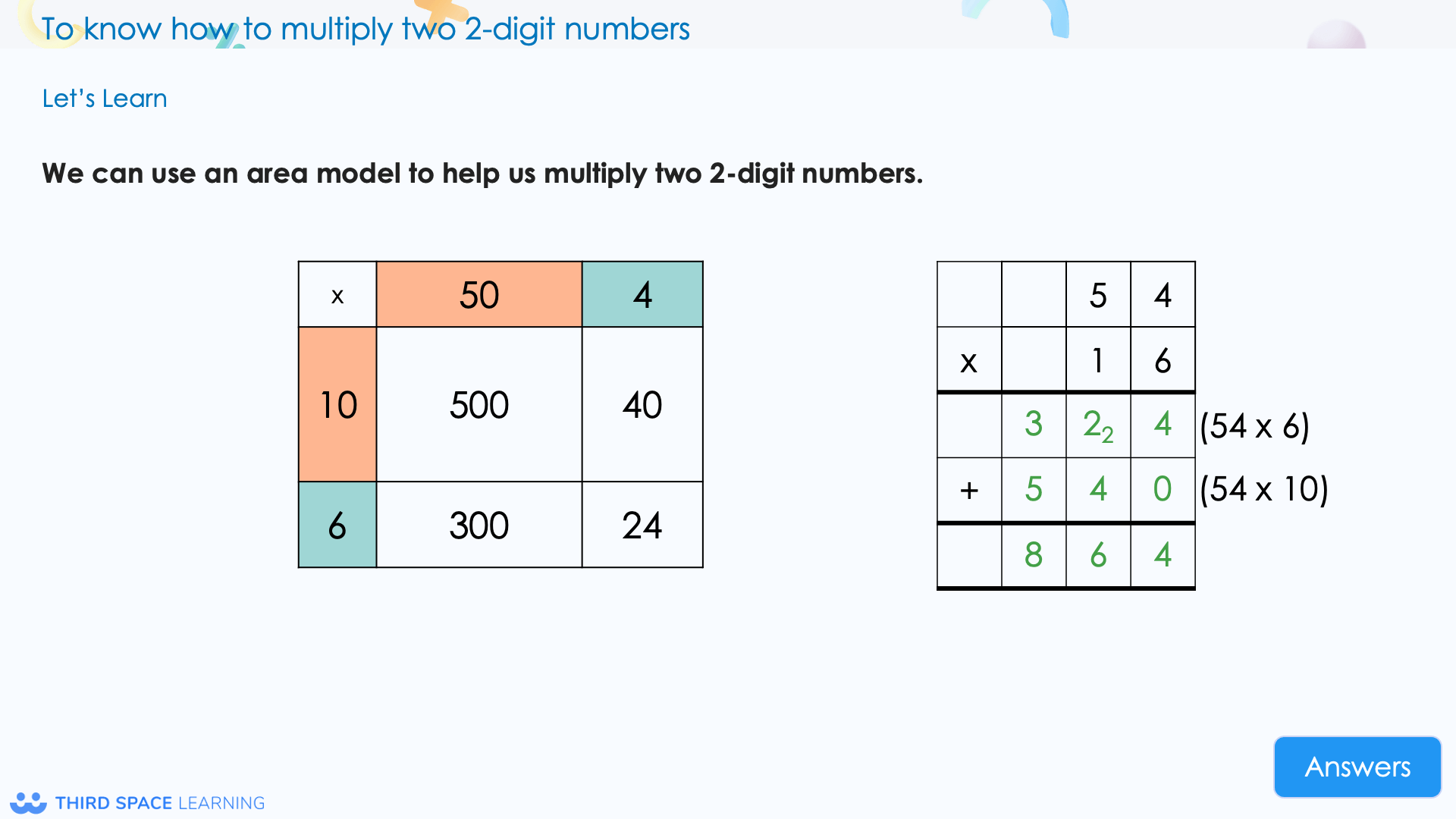
formal written method of multiplication.
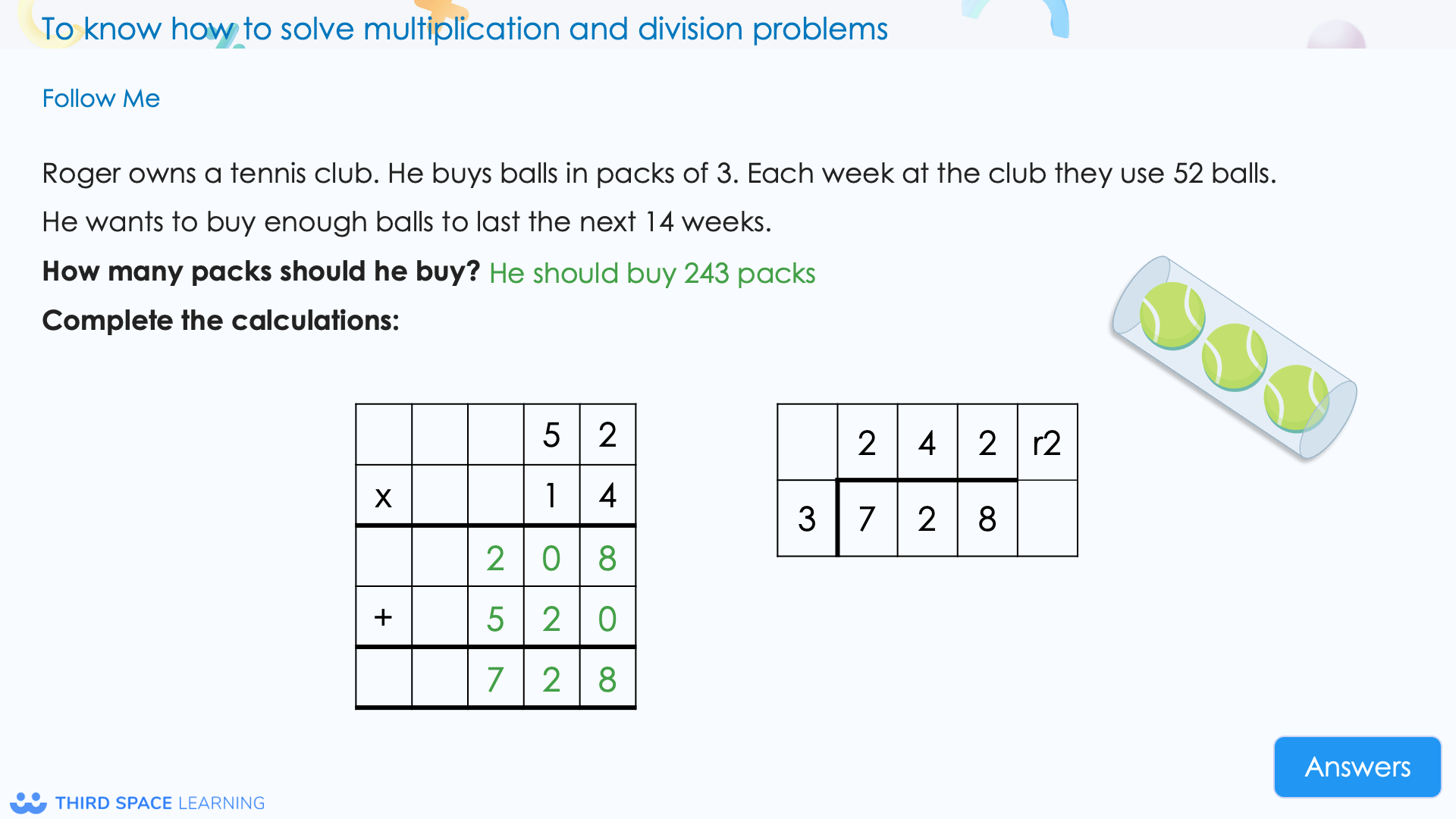
and division through problem solving.
Example Year 5 Multiplication and division B questions
1. 6432 x 54 =
Answer: 347,328
2. 7564 ÷ 6
Answer: 1260 r. 4
Fractions B Year 5
In this second, shorter fractions block, pupils learn to multiply fractions; initially multiplying fractions by integers, progressing to multiplying mixed numbers by integers. Students also continue to build on their skills of calculating fractions of amounts.
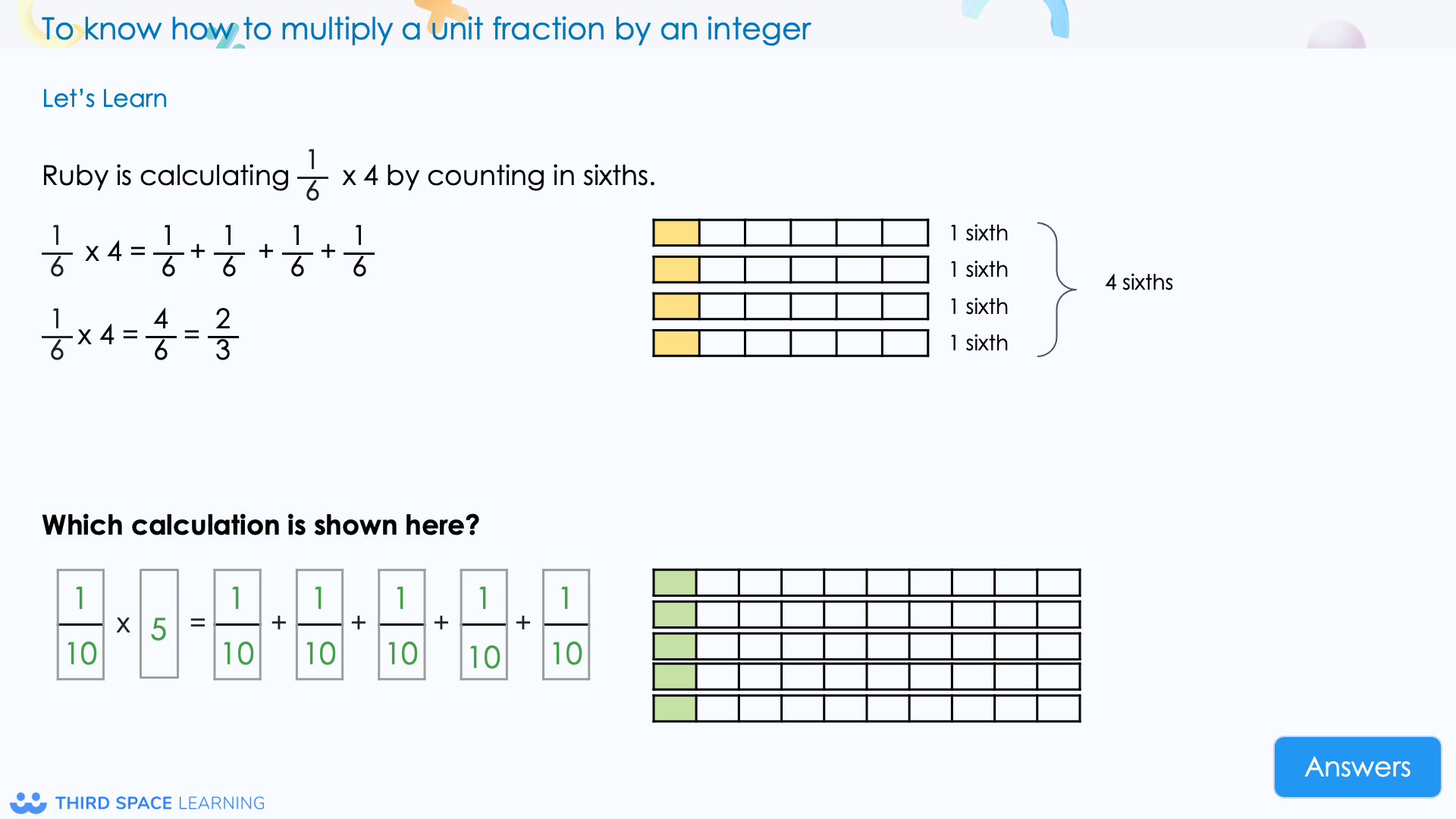
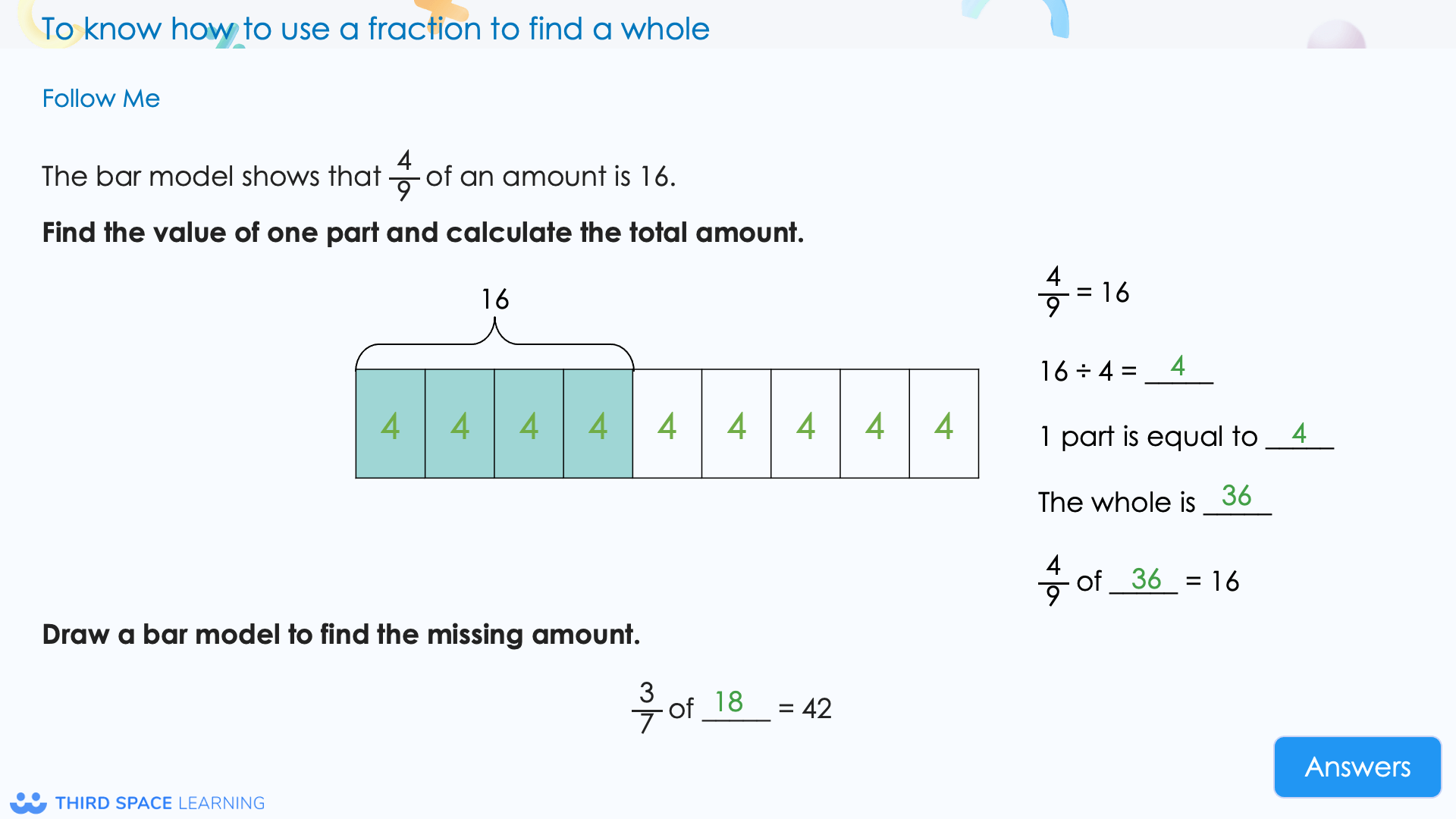
whole from a given fraction of an amount.
Example Year 5 fractions B questions
1. Calculate \frac{3}{5} of 270
Answer: 162
Decimals and Percentages Year 5
In Year 5, pupils are exposed to decimals in the spring term, but again in a topic of its own in the summer term. Pupils learn to make connections between fractions, decimals and percentages. Children begin by investigating the equivalence between fractions and decimals as tenths, hundredths and thousandths, followed by ordering and comparing decimals up to 3 decimal places and rounding decimals to the nearest whole number. In Year 5, pupils develop their understanding of the link between percentages, decimals and fractions.
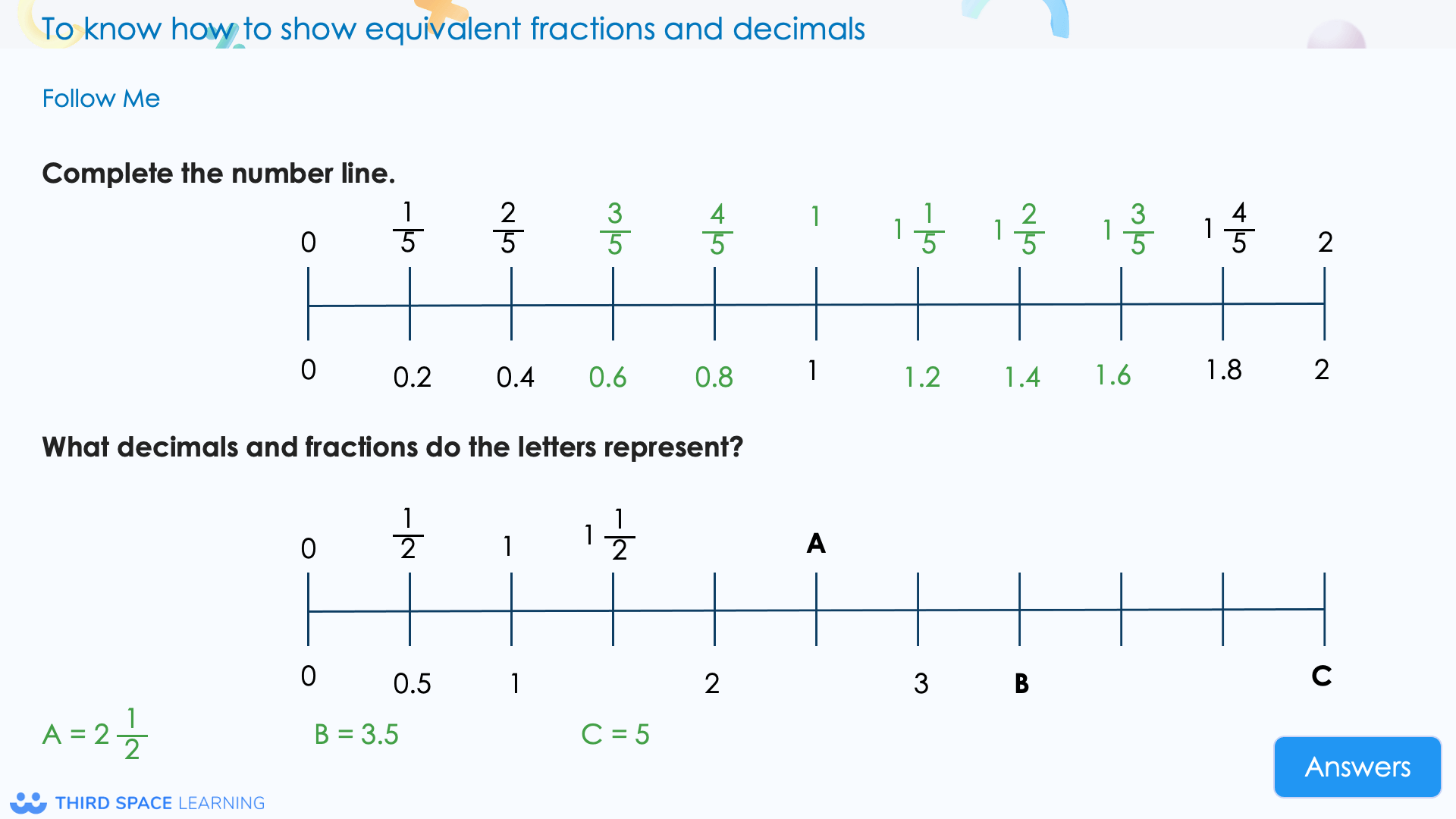
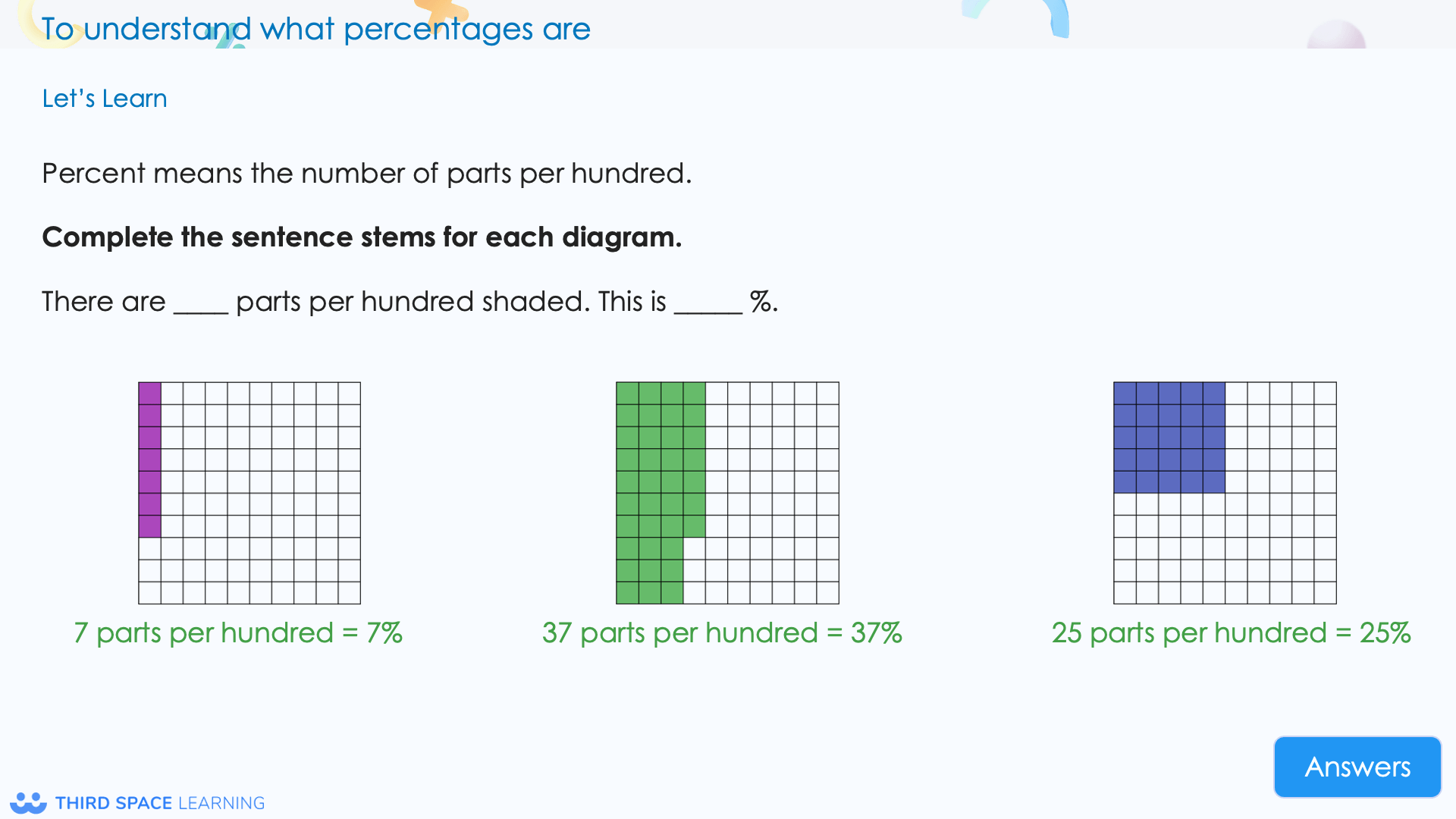
percentages are related to fractions and decimals.
Example Year 5 decimals and percentages questions
1. Write \frac{42}{200} as a decimal and a percentage
Answer: 0.21 & 21%
2. Order the following numbers from smallest to largest
53.23 53.2 53.03 53.3
Answer: 53.03, 53.2, 53.23, 53.3
White Rose Maths Year 5 decimals and percentages resources (FREE)
- Maths Worksheets Understanding The Percent Sign Year 5
- Maths Worksheets Percentages As Fractions And Decimals Year 5
White Rose Maths Year 5 decimals and percentages resources (PREMIUM)
- Ready-to-go Lessons Decimals and Percentages Year 5
- Diagnostic Assessments Decimals and Percentages Year 5
- Maths Code Crackers Decimals and Percentages Year 5
- Worked Examples Decimals and Percentages Year 5
- Word Problems Decimals and Percentages Year 5
- Extension Questions Decimals and Percentages Year 5
- Knowledge Organiser Decimals and Percentages Year 5
Perimeter and Area Year 5
Perimeter and area is a short topic in Year 5. Pupils build on the knowledge gained in Year 4, to measure and calculate the perimeter of composite rectilinear shapes and to calculate the area of rectangles and other irregular shapes.
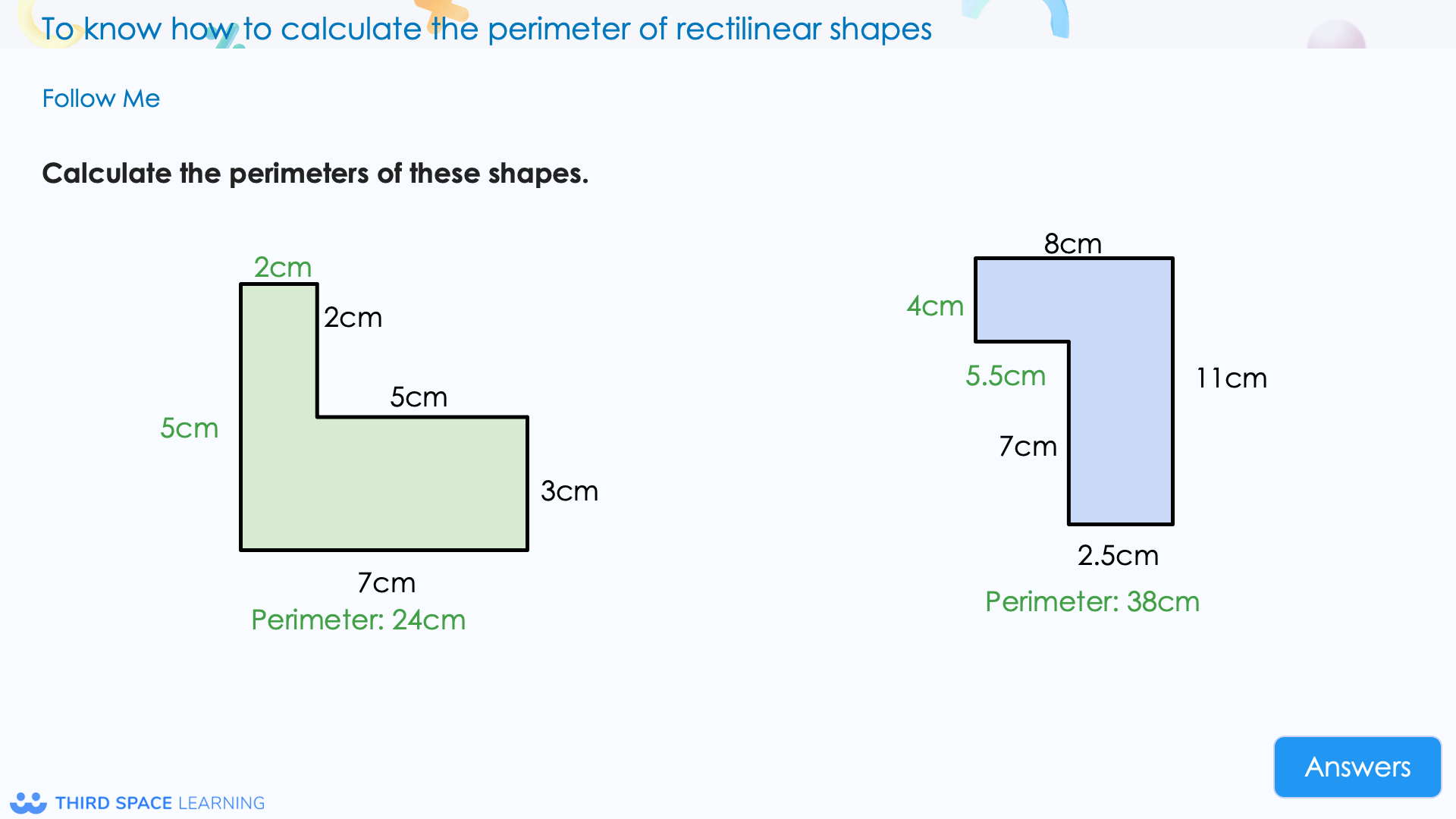
This is continued in Year 5, including where rectilinear shapes have
multiple missing sides, including side with decimals.
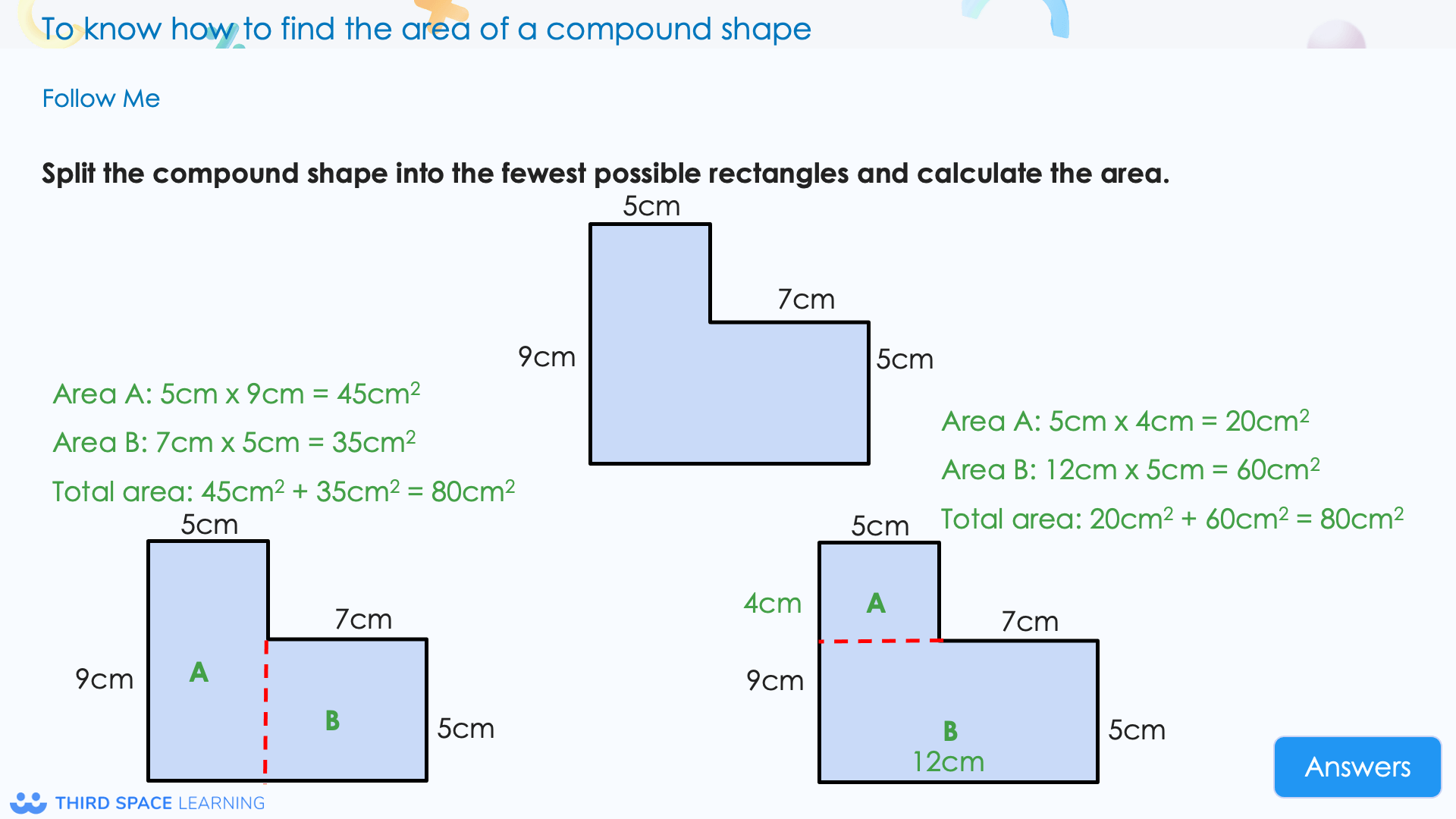
Example Year 5 perimeter and area questions
1. A regular hexagon has sides which are 7.5cm in length. What is the perimeter of the hexagon?
Answer: 45cm
2. A kitchen is 6.5m long and 3m wide. What is its area?
Answer: 19.5cm
White Rose Maths Year 5 perimeter and area resources (PREMIUM)
- Ready-to-go Lessons Perimeter and Area Year 5
- Diagnostic Assessments Perimeter and Area Year 5
- Maths Code Crackers Perimeter and Area Year 5
- Worked Examples Perimeter and Area Year 5
- Extension Questions Perimeter and Area Year 5
Statistics Year 5
In Year 5, pupils build on the statistics work completed in Year 4; connecting their work on coordinates and scales to their interpretations of line graphs. At this stage, pupils are also introduced to reading and interpreting timetables.
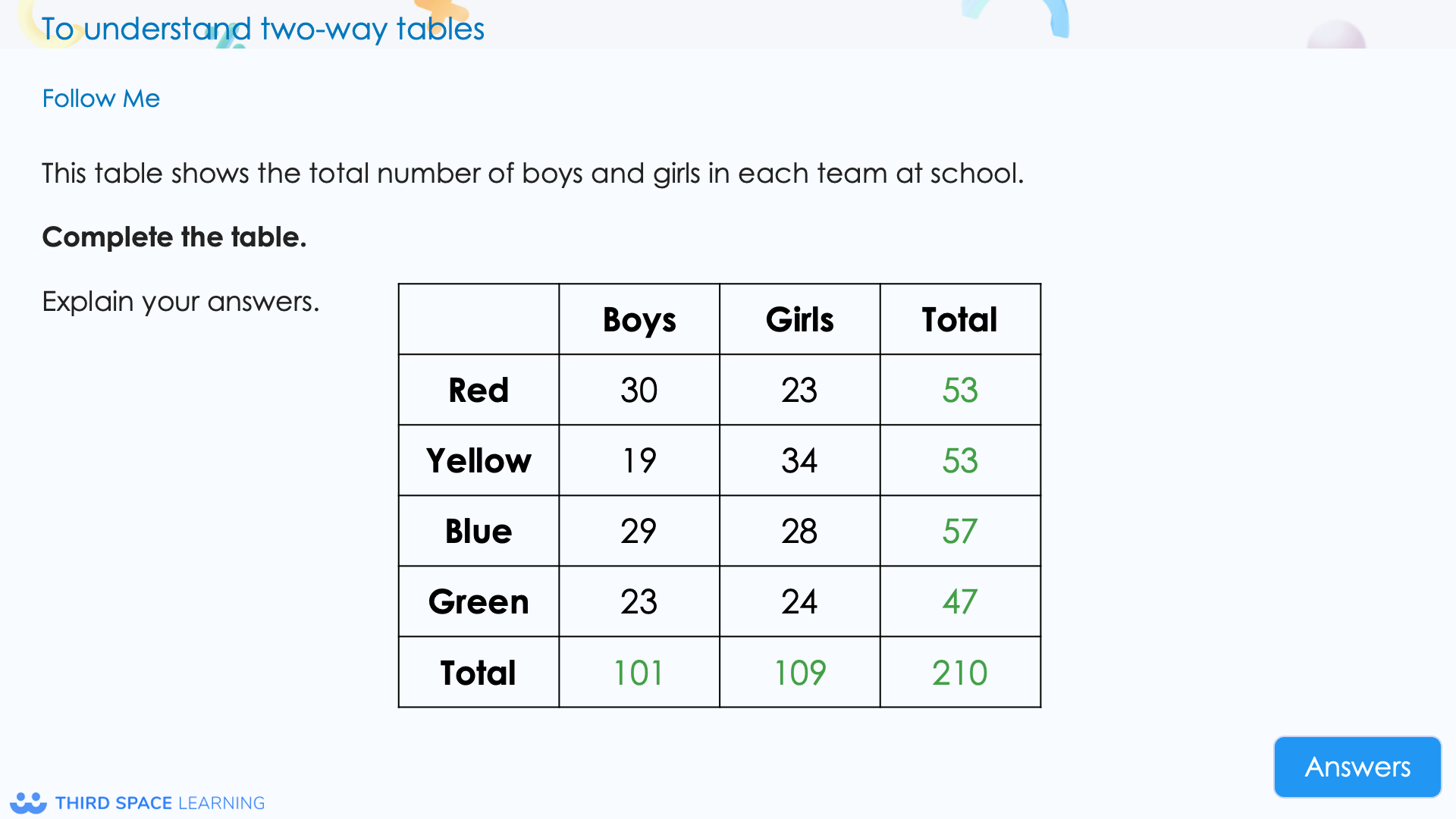
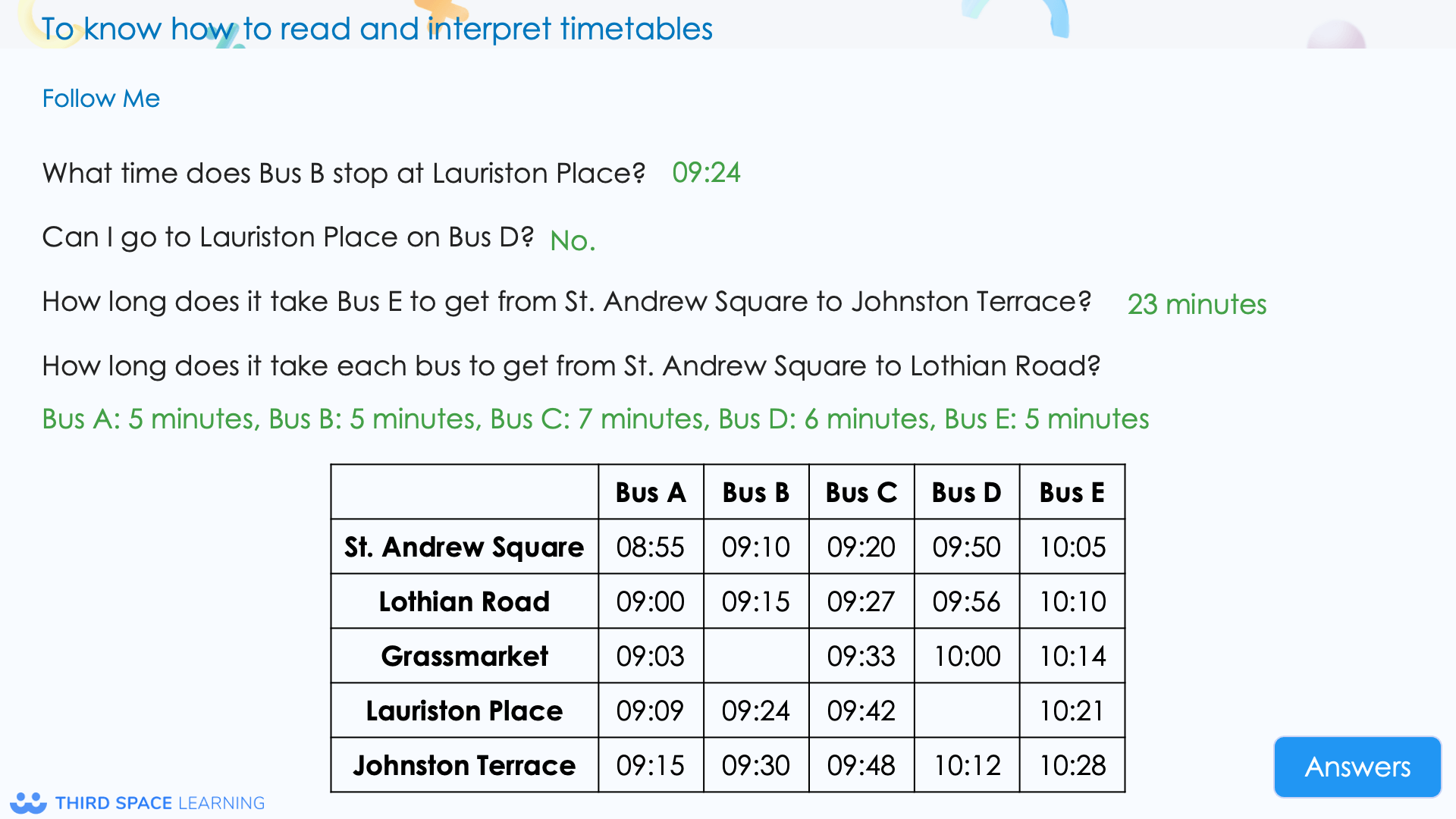
Pupils need to be able to read and interpret timetables,
while also using them to calculate durations.
Example Year 5 statistics questions
1. Monthly rainfall was measured for a year. Results are recorded in the table below. Use these results to create a line graph.
| Month | Rainfall (mm) |
| January | 43mm |
| February | 35mm |
| March | 64mm |
| April | 82mm |
| May | 104mm |
| June | 108mm |
| July | 101mm |
| August | 98mm |
| September | 86mm |
| October | 79mm |
| November | 65mm |
| December | 52mm |
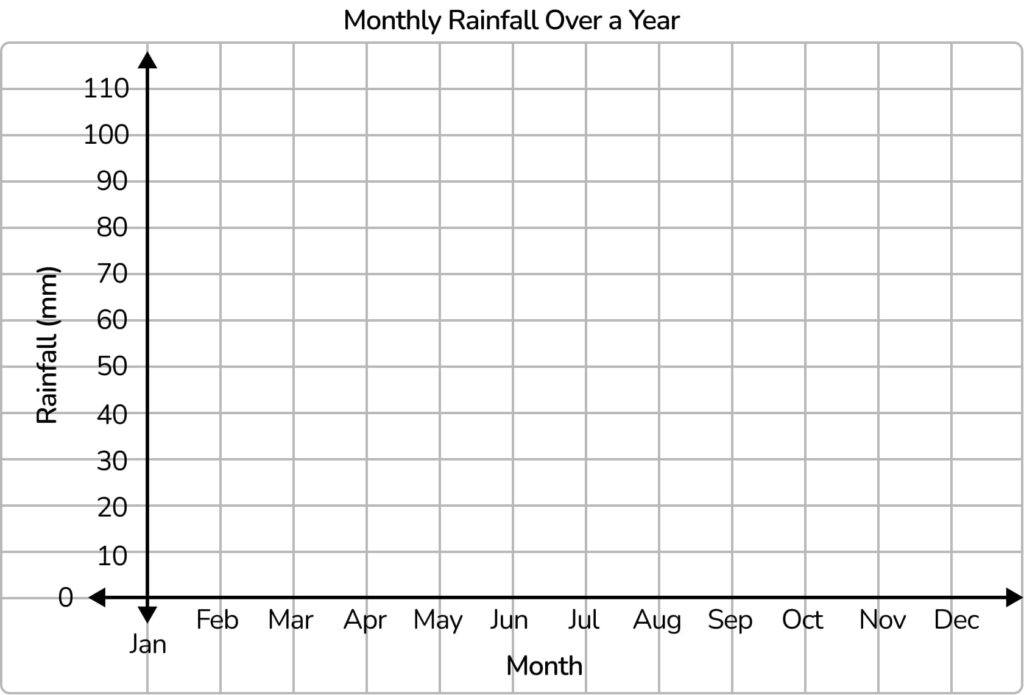
Answer:
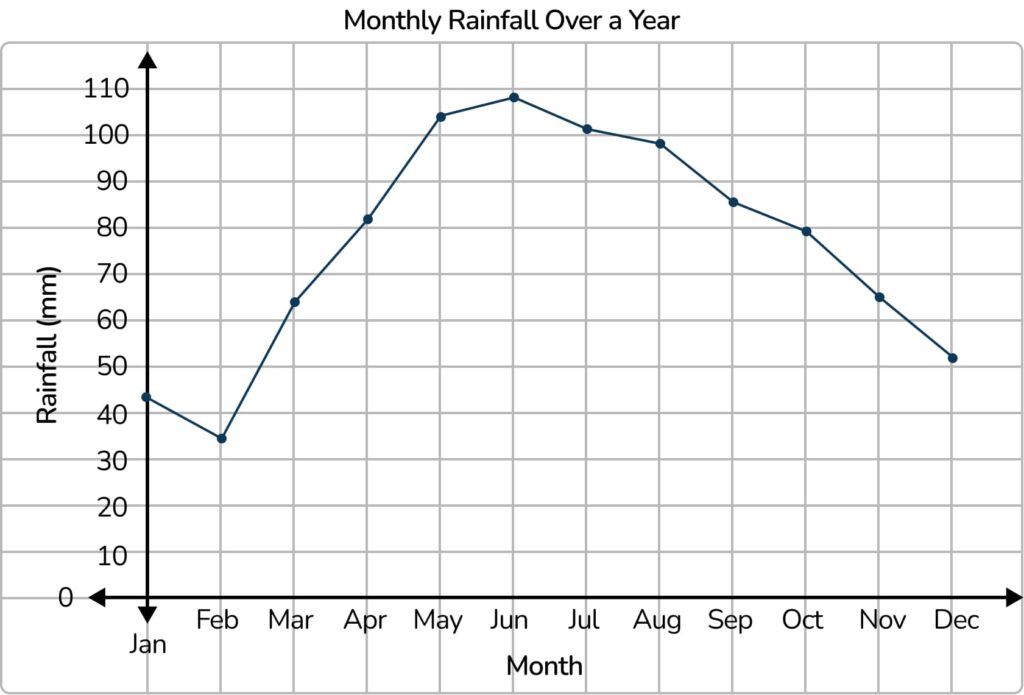
White Rose Maths Year 5 statistics resources (FREE)
White Rose Maths Year 5 statistics resources (PREMIUM)
- Ready-to-go Lessons Statistics Year 5
- Diagnostic Assessments Statistics Year 5
- Maths Code Crackers Statistics Year 5
- Worked Examples Statistics Year 5
- Knowledge Organiser Statistics Year 5
White Rose Maths Year 5 summer term
In the summer term, Year 5 focuses on shape, position & direction, decimals, negative numbers, converting units and volume
Shape Year 5
In summer block 1 of Year 5, pupils become more accurate in drawing lines with a ruler to the nearest millimetre and measuring with a protractor. Children learn to identify angles at a point and one whole turn, and angles at a point and on a straight line. Pupils use the properties of rectangles to deduce facts about missing lengths and angles and distinguish between regular and irregular polygons based on reasoning about equal sides and angles. They also become more familiar with 3D shapes.
Example Year 5 shape questions
1. Calculate the size of angle a
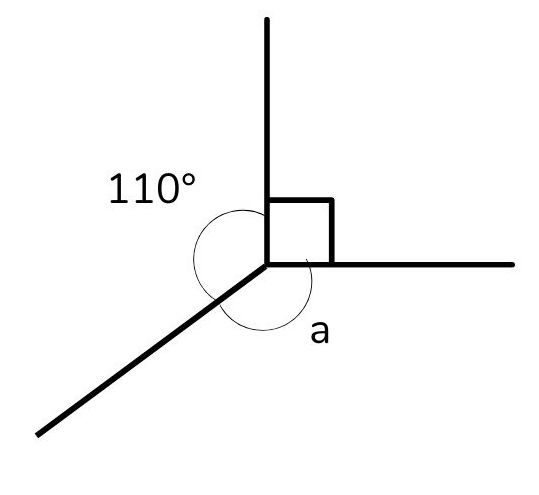
Answer: 160°
2. Explain why a square is a regular polygon.
Answer: A square has all sides the same length and all angles the same size.
White Rose Maths Year 5 shape resources (FREE)
- Maths Worksheets Regular And Irregular Polygons Year 5
- Maths Worksheets Measuring Angles Up To 180 Degrees Year 5
- Maths Worksheets Calculating Angles On Straight Lines Year 5
- Maths Worksheets Calculating Angles Around A Point Year 5
- Maths Worksheets Drawing Lines And Angles Accurately Year 5
White Rose Maths Year 5 shape resources (PREMIUM)
- Ready-to-go Lessons Shape Year 5
- Diagnostic Assessments Shape Year 5
- Maths Code Crackers Shape Year 5
- Worked Examples Shape Year 5
- Extension Questions Shape Year 5
Position and Direction Year 5
In Year 5, pupils recognise and use reflection and translation in a variety of diagrams. They build on their knowledge from Year 4; continuing to use a 2D grid and coordinates in the first quadrant and translating with coordinates. Children also continue to build on their understanding of symmetry; reflecting in horizontal and vertical lines.
Example Year 5 position and direction questions
1. Plot the following coordinates on a grid:
(2,3) (4,3) and (4,5)
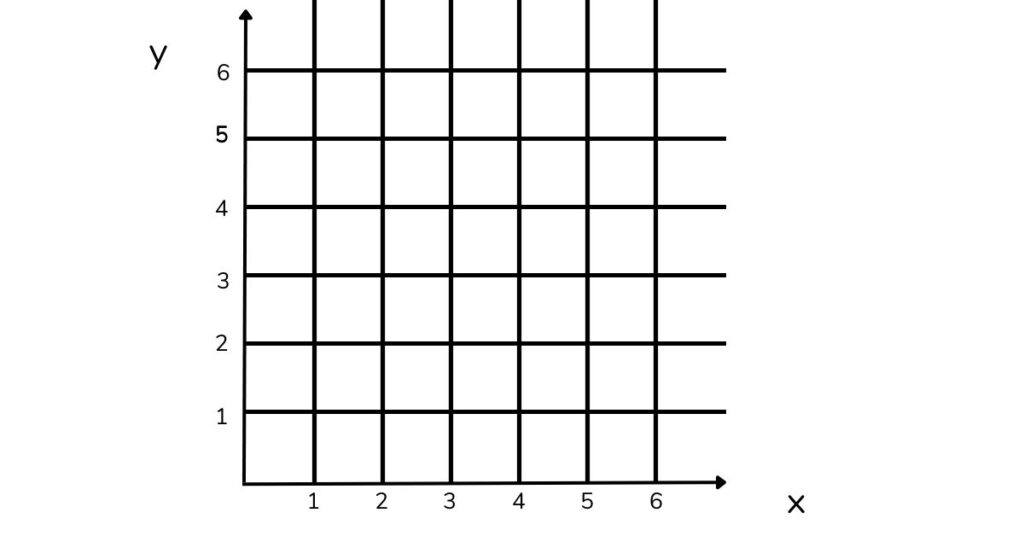
2. What coordinates would you need to plot to make a square?
Answer: 4th coordinate = (2,5)
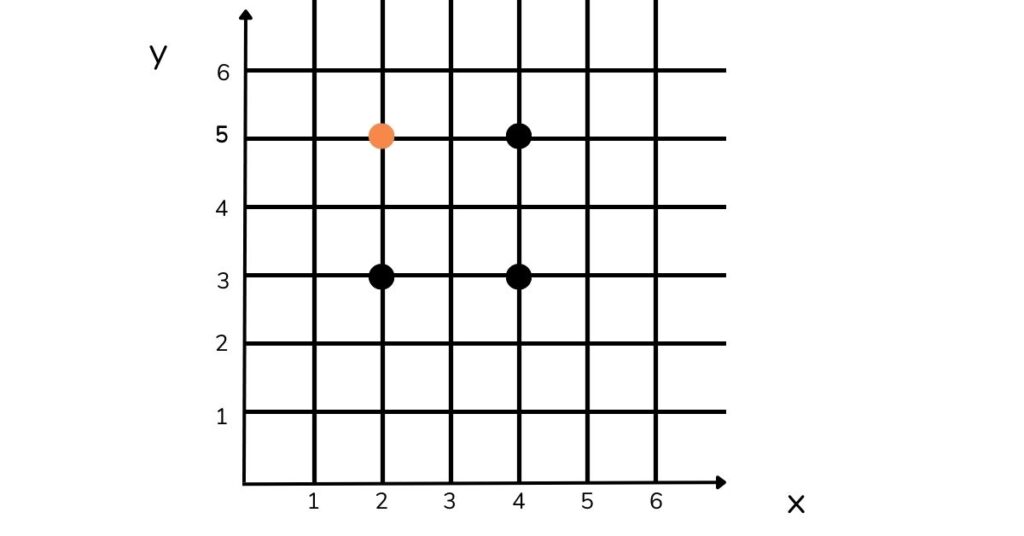
White Rose Maths Year 5 position and direction resources (FREE)
- Maths Worksheets Translation Year 5
- Maths Worksheets Translation With Coordinates Year 5
- Maths Worksheets Reflection Year 5
White Rose Maths Year 5 position and direction resources (PREMIUM)
- Ready-to-go Lessons Position and Direction Year 5
- Diagnostic Assessments Position and Direction Year 5
- Maths Code Crackers Position and Direction Year 5
- Worked Examples Position and Direction Year 5
Decimals Year 5
The summer term is the second time pupils are exposed to decimals. In this topic, pupils add and subtract decimals; initially with the same number of decimal places, but then progressing to different numbers of decimal places. Pupils also multiply whole numbers and decimals by 10, 100 and 1000.
Example Year 5 decimals questions
1. Multiply 0.34 by 10, 100 and 1000
Answer:
0.34 x 10 = 3.4
0.34 x 100 = 34
0.34 x 1000 = 340
2. 7.34 – 5.368 =
Answer: 1.972
White Rose Maths Year 5 decimals resources (FREE)
- Maths Worksheets Thousandths As Decimals Year 5
- Maths Worksheets Fractions As Decimals Year 5
- Maths Worksheets Rounding Decimals To The Nearest Tenth Year 5
- Maths Worksheets Comparing Decimals Using Money Year 5
- Maths Worksheets Ordering And Comparing Decimals Year 5
- Maths Worksheets Adding Decimals With The Same Decimal Places Year 5
- Maths Worksheets Adding Decimals With Different Decimal Places Year 5
- Maths Worksheets Subtracting Decimals With The Same Decimal Places Year 5
- Maths Worksheets Subtracting Decimals With Different Decimal Places Year 5
- Maths Worksheets Adding And Subtracting Decimals Year 5
- Maths Worksheets Multiplying By 10, 100 And 1,000 Year 5
- Maths Worksheets Dividing By 10, 100 And 1,000 Year 5
- Maths Worksheets Multiplying And Dividing Integers And Decimals By 10 And 100 Year 5
White Rose Maths Year 5 decimals resources (PREMIUM)
- Ready-to-go Lessons Decimals Year 5
- Diagnostic Assessments Decimals Year 5
- Maths Code Crackers Decimals Year 5
- Worked Examples Decimals Year 5
- Extension Questions Decimals Year 5
Negative Numbers Year 5
This is a very short block, in which pupils begin to understand negative numbers. They begin by counting through zero in 1s, followed by counting through zeros in multiples. Pupils also compare and order negative numbers and find the difference.
Example Year 5 negative number questions
1. 3 – 14 =
Answer: -11
2. What is the difference between -17 and 8
Answer: 25
White Rose Maths Year 5 negative numbers resources (PREMIUM)
- Ready-to-go Lessons Negative Numbers Year 5
- Diagnostic Assessments Negative Numbers Year 5
- Maths Code Crackers Negative Numbers Year 5
- Worked Examples Negative Numbers Year 5
- Extension Questions Negative Numbers Year 5
Converting Units Year 5
In Year 5, pupils convert between a range of units; including kilograms and kilometres; millimetres and centimetres; centimetres and metres; grams and kilograms and litres and millilitres. In this block, students also convert units of time and calculate with timetables.
Example Year 5 converting units questions
1. 5.34kg = ______g
Answer: 5340g
2. A film starts at 7:25pm and lasts for 1 hour and 35 minutes. What time does it finish? Give your answer in 24 hour clock.
Answer: 21:00
White Rose Maths Year 5 converting units resources (FREE)
- Maths Worksheets Converting Units Of Metric Measures Year 5
- Maths Worksheets Converting Between Metric And Imperial Units Year 5
- Maths Worksheets Converting Units Of Time Year 5
White Rose Maths Year 5 converting units resources (PREMIUM)
- Ready-to-go Lessons Converting Units Year 5
- Diagnostic Assessments Converting Units Year 5
- Maths Code Crackers Converting Units Year 5
- Worked Examples Converting Units Year 5
- Extension Questions Converting Units Year 5
Volume Year 5
This is a very short final block in Year 5. Pupils learn about cubic centimetres and comparing volume. They also estimate volume and capacity.
Example Year 5 volume questions
1. What is the volume of the shape below, if each cube is 1cm x 1cm x 1cm?

Answer: 18cm^{3}
White Rose Maths Year 5 volume resources (PREMIUM)
- Ready-to-go Lessons Volume Year 5
- Diagnostic Assessments Volume Year 5
- Maths Code Crackers Volume Year 5
- Worked Examples Volume Year 5
- Extension Questions Volume Year 5
Follow the links below for the other articles in this series:
DO YOU HAVE STUDENTS WHO NEED MORE SUPPORT IN MATHS?
Skye – our AI maths tutor built by teachers – gives students personalised one-to-one lessons that address learning gaps and build confidence.
Since 2013 we’ve taught over 2 million hours of maths lessons to more than 170,000 students to help them become fluent, able mathematicians.
Explore our AI maths tutoring or find out about primary maths tutoring for your school.



